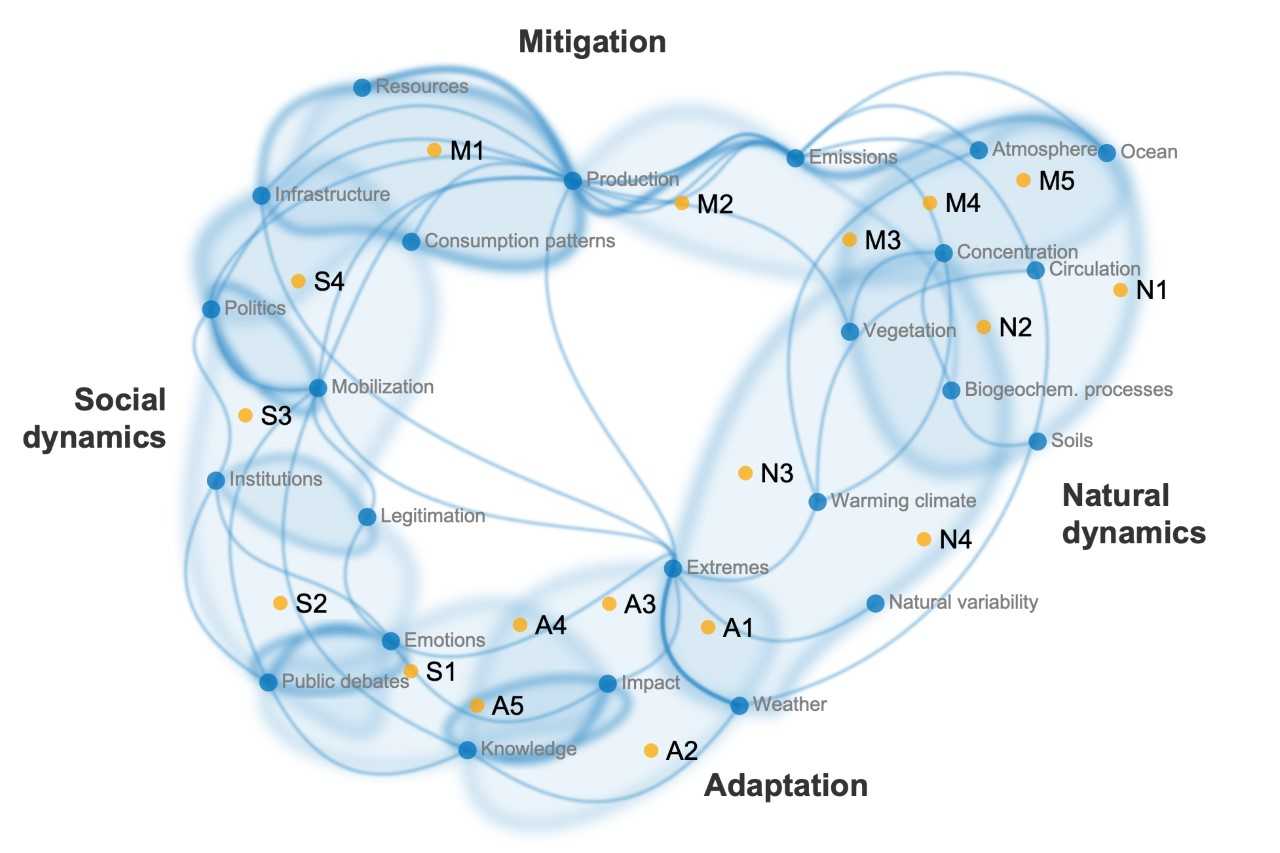Coming soon: CLICCS II
Following its success in the Excellence Competition, CLICCS will enter its second funding period in January 2026. The new cluster will provide scientific answers to the question: Which climate futures are plausible, and how can desired climate futures be realized?
CLICCS's integrating approach characterizes climate futures by focusing on two key dynamics and their coupling: The natural dynamics of the climate system and the social dynamics of society, which are coupled through mitigation and adaptation efforts. Accordingly CLICCS II is structured in four themes, social dynamics, mitigation, natural dynamics and adaptation. It is brought alive through 18 projects, each investigating fundamental aspects of climate futures.

Fig: CLICCS II map of shared concepts (nodes) and selected connecting processes between them (paths), characterizing social and natural dynamics of climate futures and their two couplings via mitigation and adaptation. Copyright: UHH/CLICCS
Social dynamics:
S1 "Social constructions of climate moods"
S2 "Contested climate futures: Discursive powerplay in the media"
S3 "Varieties of climate agency: Constitution, dynamics and effects"
S4 "Climate policy formation: Predictions, preferences and politics"
Mitigation:
M1 "Decarbonization dynamics of companies"
M2 "Renewables and carbon offsets in the Global South: Impacts and social conflict"
M3 "Carbon dynamics and climate futures in drylands of Southern Africa"
M4 "Earth system feedbacks in the land-ocean continuum"
M5 "Response of carbon sinks under deep decarbonization"
Natural dynamics:
N1 "Ocean circulation"
N2 "Low-level clouds"
N3 "Precipitation"
N4 "Scale interactions in a waming Arctic"
Adaptation:
A1 "Climate AI interaction with stakeholders in Northern Germany"
A2 "Co-creating narrative-based near-term climate predictions to prepare for volatile future climates"
A3 "Costs and consequences of extremes in a changing climate"
A4 "Extreme adaptation to climate change"
A5 "Co-creating socio-ecological transformation of climate change governance in North Germany"
